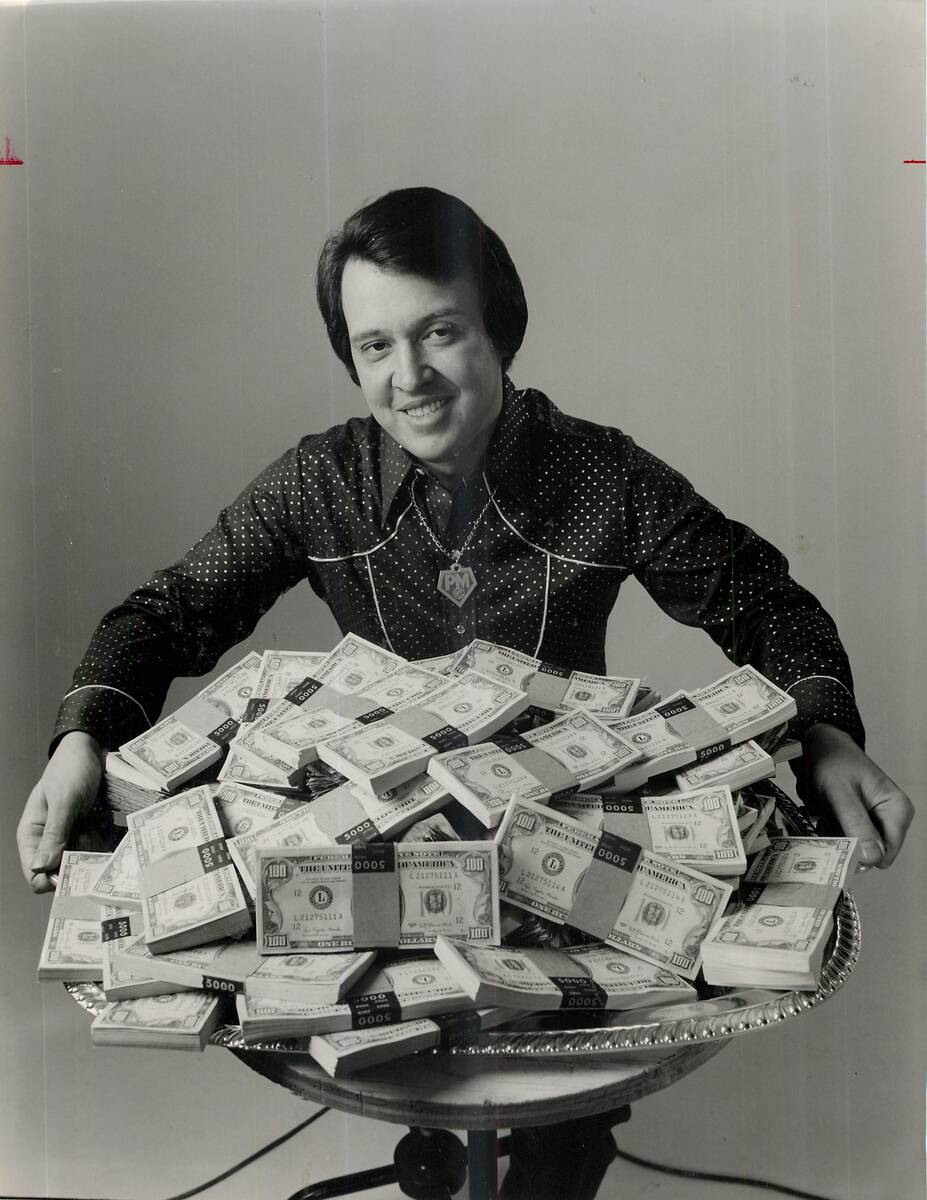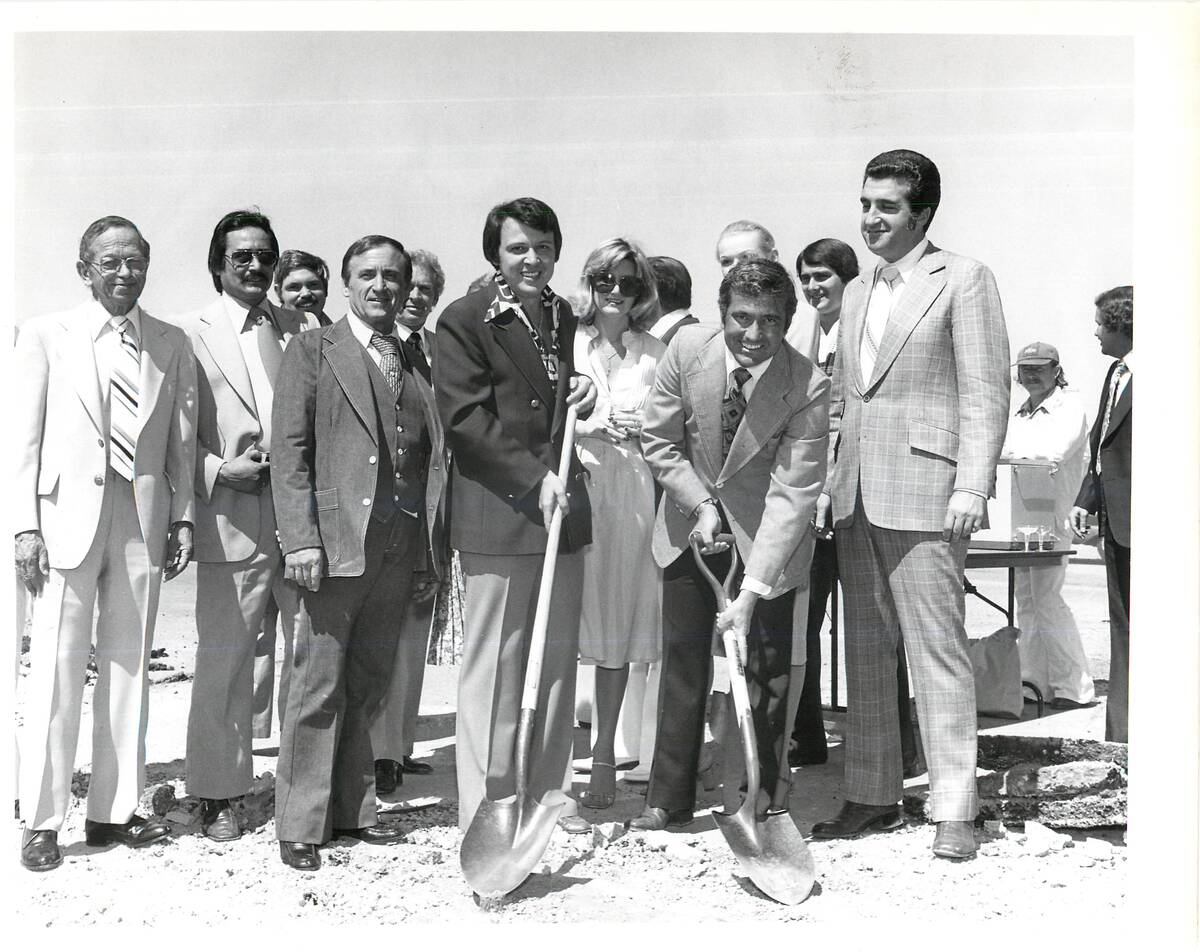How Southern Nevada’s ‘greatest hustler’ brought The Strat to Las Vegas
Magicians and their tricks abound on the Las Vegas Strip.
But few could exceed the magic flamboyant casino operator Bob Stupak pulled off during his Las Vegas career when, over the course of three and a half decades, he turned what was first known as Bob Stupak’s World Famous Historic Gambling Museum to Bob Stupak’s Vegas World to the Stratosphere Hotel and Tower to what is now known as The Strat.
To tell the story of how Vegas World became The Strat means telling the story of Stupak, known as the “Polish Maverick,” a professional poker player who once won $1 million in a highly publicized Super Bowl bet and who was frequently referred to as Southern Nevada’s greatest hustler — or possibly, its greatest huckster, and the closest thing to P.T. Barnum anyone in the state had ever seen.
Vegas World was an outer space-themed casino on Las Vegas Boulevard that is in the no-man’s-land that is considered neither the Strip nor downtown Las Vegas.
The son of the owner of an illegal dice joint in Pittsburgh, Pennsylvania, Stupak also became an avid competitive motorcyclist. Destined to follow in his gambler father’s footsteps, Stupak’s time in Las Vegas was well chronicled over the years in the archives of the Las Vegas Review-Journal.
Coupon promoter
After being stationed with the army at Fort Knox, at age 22 he started a two-for-one coupon company in 1964 and moved with it to Australia a year later. He moved to Las Vegas in 1971 and bought 1½ acres that had been a used car lot on Las Vegas Boulevard, eventually building Bob Stupak’s World Famous Million-Dollar Historic Gambling Museum and Casino, opening the doors on March 31, 1974. Stupak joked that the name of the place was longer than the casino building.
Two months later, an air conditioner caught fire and burned the place to the ground. Two years after that, an insurance settlement and a million-dollar Valley Bank loan put Stupak back in business. He built Bob Stupak’s Vegas World, which opened on a Friday the 13th in July 1979.
Vegas World’s space theme was accented with a replica of a NASA Apollo capsule and a life-size dummy astronaut suspended from the casino ceiling.
The property also had model rockets and purported moon rocks on display.
Stupak’s ability to market the property with coupons and vacation deals served him well in winning customers, but also got him in trouble with Nevada gaming regulators. In 1991, Stupak paid a $125,000 fine to settle a complaint for publishing misleading advertising.
Double-exposure 21
His casino offered games and bets other Las Vegas casinos wouldn’t touch. Vegas World was the first casino to offer “double exposure 21,” a variation of the traditional blackjack game in which both of the dealer’s cards are shown to all players. The catch: Blackjack winners only received even money instead of a 3:2 payoff and all ties were losers instead of a push.
Stupak became famous for taking or placing large sports wagers. In 1989, he placed a million-dollar bet on the Cincinnati Bengals plus seven points against Joe Montana and the San Francisco 49ers. San Franciso beat the Bengals 20-16, thanks to a late field-length Montana-led touchdown drive that gave Stupak the wager win.
That same year, he played no-limit poker with a supercomputer for $500,000 in a nationally televised broadcast.
Thanks to Stupak’s promotional skills, in which he offered virtually free vacations that enticed visitors to play long and large in the casino, Vegas World got the reputation as a tacky throw-back to casinos’ mob days, at a time when the gaming industry was being corporatized. His “Vegas Vacation Club” direct-mail promotions and national magazine advertisements drew customers nationwide.
In its heyday, Vegas World was generating more than $100 million a year in gaming revenue and was the largest individually owned casino in the world.
Filled to capacity
The four-story, 90-room hotel — later expanded twice, in 1984 and 1990, to 932 rooms with new wings in a 25-story tower — was frequently at full occupancy.
Stupak was all about promotion with a wide variety of gimmicks. Vegas World was the first casino property to offer quarter-million-dollar and million-dollar slot machine jackpots. The casino purportedly had the largest “Big 6” wheel in the world.
In a self-promotion stunt that received worldwide media attention, Stupak donated $100 million to the United Negro College Fund in exchange for a chance to play with the Harlem Globetrotters. When his new Vegas World tower was opened, he offered stuntman Dan Koko $1 million to jump a motorcycle from the tower — then charged him a $990,000 “landing fee.”
Seeing the publicity generated for then-casino operator Donald Trump, Stupak invented a board game called “Stupak.” He challenged Trump to a $1 million competition for charity to play “Trump: The Game,” but Trump declined.
Stupak also was into politics and unsuccessfully ran for mayor of Las Vegas twice and for lieutenant governor. He also financed campaigns for his children for political offices.
Tower inspiration
On a trip to Australia to visit his daughter, Stupak saw the Sydney Tower, which inspired him to investigate building “the Stupak Tower,” designed to redirect attention from the newly opened Mirage to his business, according to previous Review-Journal reporting.
After a windstorm destroyed a Vegas World sign, Stupak was convinced to build a neon-lit sign tower, knowing it would become an iconic Las Vegas structure that could be seen valleywide. That later evolved to an observation tower.
He took a proposal to build a 1,400-foot tower to the Las Vegas City Council, but the height was reduced through Federal Aviation Administration restrictions to just over 1,100 feet.
Stupak envisioned amusement rides at the top of the tower, including a roller coaster and a King Kong-themed ride with passengers inside a giant ape scaling the outside of the building. The High Roller coaster was built, but eventually removed, and the King Kong ride never materialized.
But other rides — the Big Shot, X-Scream, Insanity and SkyJump — exist to this day, as do indoor and outdoor observation decks and a revolving restaurant, The Top of the World.
Stupak also was the promoter of a timeshare development themed for the ill-fated Titanic, but authorities quashed the idea.
Eventually, construction began in February 1992 on what would be known as the Stratosphere Tower,which was to be the centerpiece of a $550 million complex.
Roman candle
With the tower about halfway completed, on Aug. 29, 1993, a fire broke out and Vegas World customers below were evacuated from the casino at around midnight, according to Review-Journal archives.
The tower looked like a giant Roman candle and the publicity fallout was enormous with critics referring to it as “the towering inferno.” With construction costs mounting and loan payment deadlines looming, Stupak got help from casino operator and poker friend Lyle Berman to finance completion of the project.
While construction was underway, on March 31, 1995 — 21 years to the day after he opened his first Las Vegas casino — Stupak nearly died after crashing his Harley-Davidson motorcycle while traveling at 60 mph. He broke every bone in his face and was comatose. Doctors did not expect him to survive.
But he did. And he lived to see the Stratosphere open April 30, 1996. By then, Stupak was a 17 percent owner of shares in the company while Berman controlled 33 percent. Stupak, who had no day-to-day operational responsibilities, eventually resigned as chairman of the company’s board of directors.
While analysts were optimistic about the Stratosphere’s prospects, the building’s rough neighborhood, intense competition from other resorts and design flaws that enabled visitors to enter the tower without passing through the casino led to a Chapter 11 bankruptcy protection filing in January 1997. Stupak blamed poor management for the decline.
Later in 1997, corporate raider Carl Icahn bought enough shares to take control of the property, and Stupak abandoned an effort to regain control.
Icahn formed American Casino & Entertainment Properties to oversee the resort in 2004 and made improvements and expansions at the property. In April 2007, Icahn sold ACEP to Goldman Sachs affiliate Whitehall Street Real Estate Funds, which promised more renovations and improvements.
Golden’s Strat
It wasn’t until June 2017 that the current owner, Golden Entertainment Inc., bought ACEP for $850 million, also announcing a $140 million renovation project at the time.
In February 2019, Golden announced the name change to The Strat. It’s now the centerpiece of Golden’s portfolio.
Stupak died of leukemia Sept. 25, 2009, at 67. He has a park and a community center near the Strat named in his honor.
He’s remembered as one of the most colorful casino operators — and a promotional magician.
Contact Richard N. Velotta at rvelotta@reviewjournal.com or 702-477-3893. Follow @RickVelotta on X.























